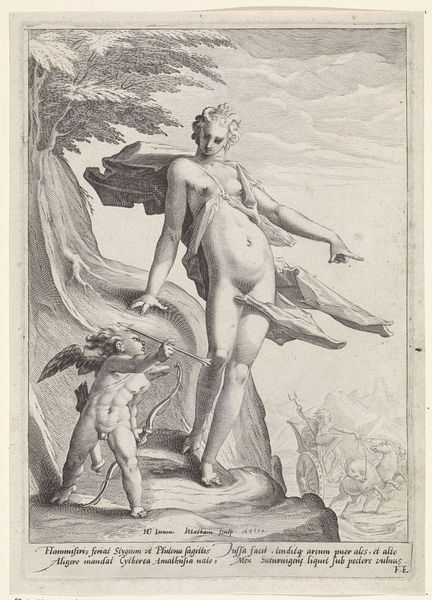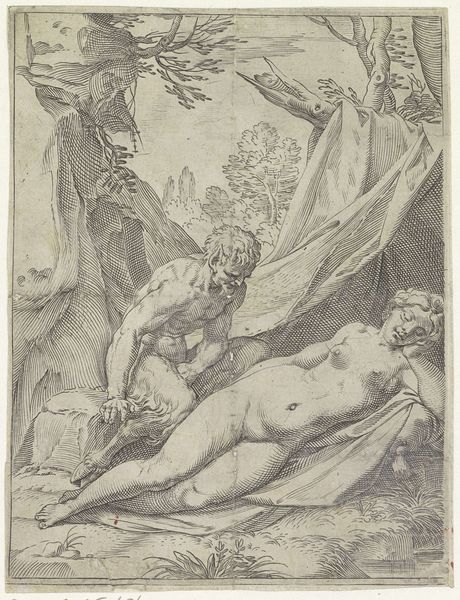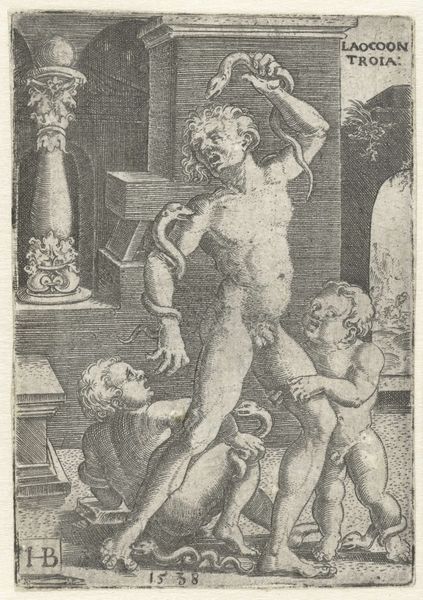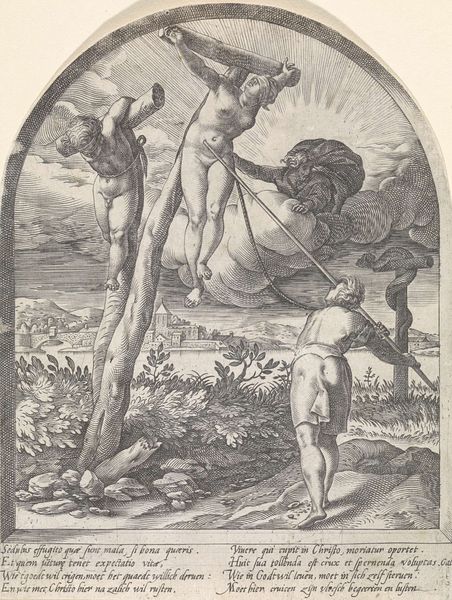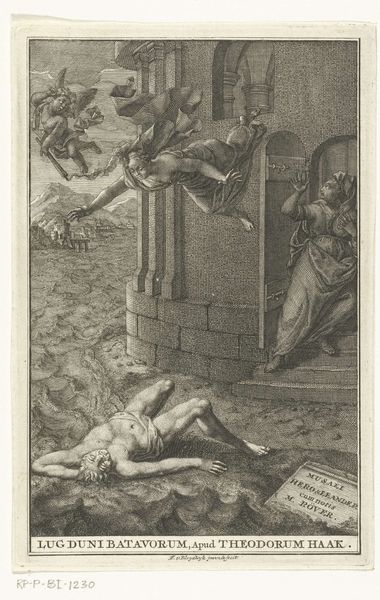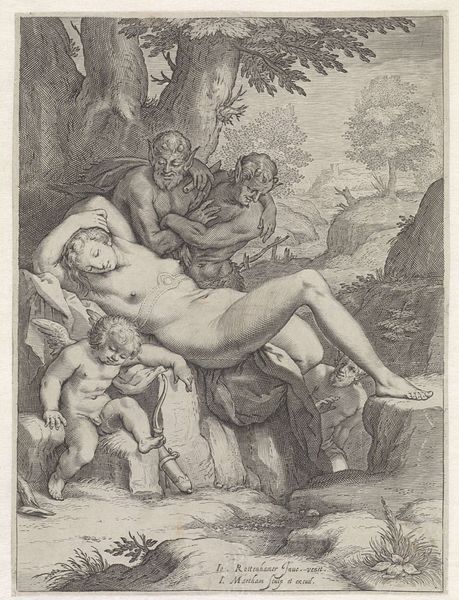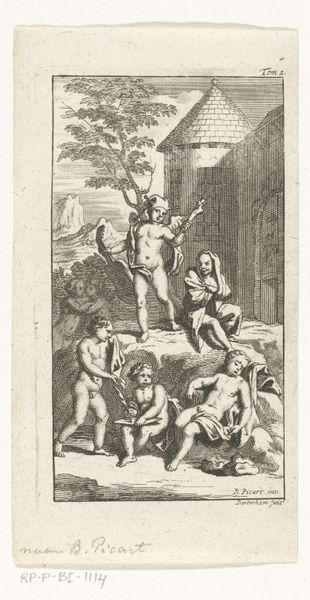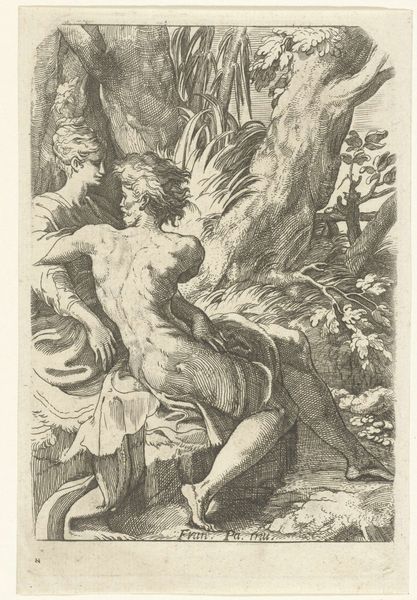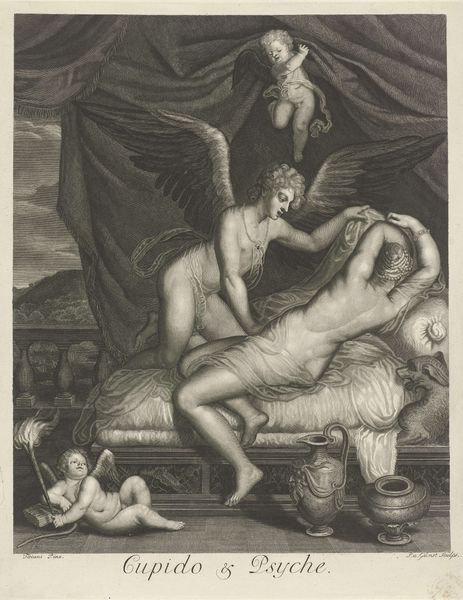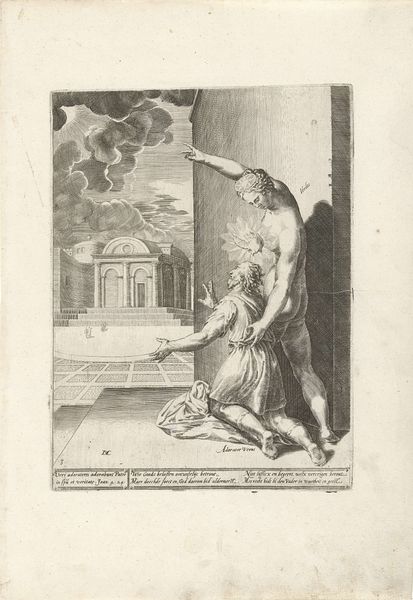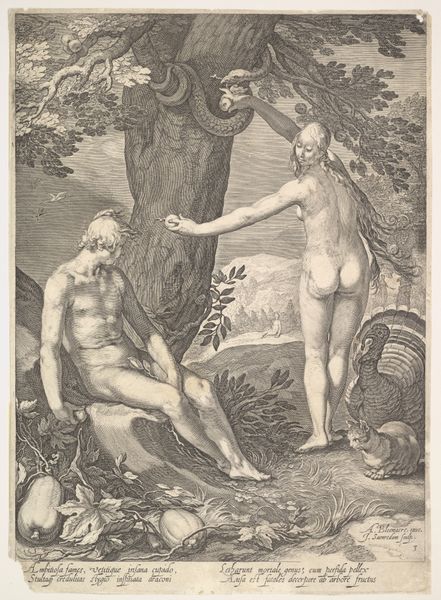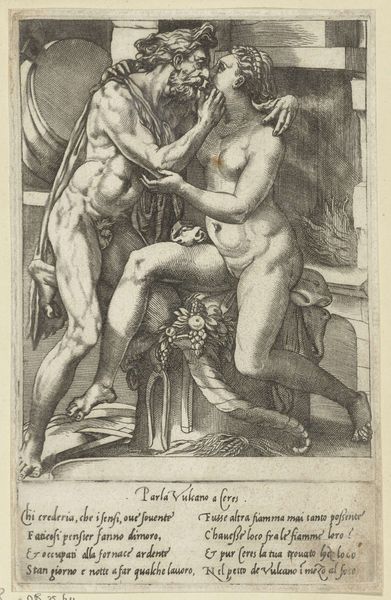
print, engraving
#
allegory
#
narrative-art
# print
#
old engraving style
#
mannerism
#
figuration
#
history-painting
#
northern-renaissance
#
nude
#
engraving
Dimensions: height 218 mm, width 158 mm
Copyright: Rijks Museum: Open Domain
Hendrick Goltzius made this engraving of Pyramus and Thisbe, classical lovers, sometime in the late 16th century. But why would a Dutch artist choose to depict a tragic tale from ancient Rome? The answer lies in the cultural aspirations of the Dutch Republic at this time. Newly independent from Spain, the Dutch were keen to establish their own distinct cultural identity. By engaging with classical themes and artistic styles, they aligned themselves with the artistic traditions of Italy and Greece. The image is replete with art historical references to the classical world. The sculpture on the left is in the style of an antique statue. The landscape is not the flat terrain of the Netherlands, but an idealized vision of a rocky landscape fit for gods and heroes. The story of Pyramus and Thisbe was often used in the Renaissance to explore themes of love, tragedy, and fate. Goltzius's engraving would have been seen as a sophisticated and learned work, demonstrating the artist's knowledge of classical literature and art. The print medium allowed the image to be widely distributed and consumed, shaping the cultural identity of the rising Dutch nation. Historical archives, literature, and the study of artistic styles help us to understand the artwork of the past.
Comments
No comments
Be the first to comment and join the conversation on the ultimate creative platform.
